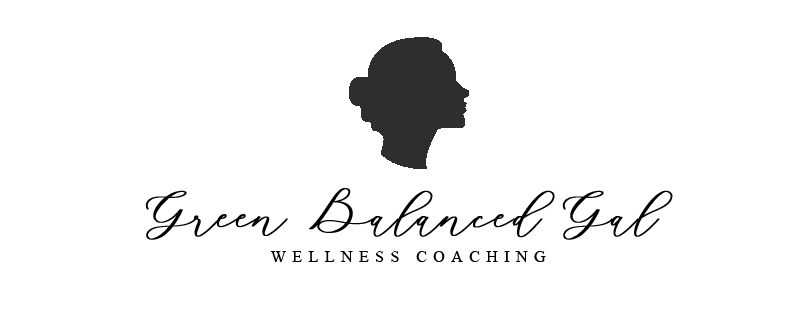I didn’t glow, but I was once radioactive. This sci-fi type of experience is a therapy to treat certain types of thyroid cancers. Its use is determined by a medical team, based on specific criteria. My case qualified and after hours of research, I made the decision to incorporate this therapy into my treatment plan.
Since my experience, I often get the chance to connect with newly diagnosed thyroid cancer warriors and one common question I’m asked is about my personal experience with radiation. I’m not surprised, as I felt the same way when I was first diagnosed and thankfully, I had wonderful “mentors” (you know who you are!) to share their experiences with me. Every patient’s journey is unique, but here’s a share of my experience for those wondering what it was like.
Table of Contents
Why I Chose RAI (Radioactive Iodine, I-131) …
Through my research, it seemed that many papers and medical lectures contradicted one another for low to intermediate risk patients. For high-risk patients, RAI was almost always recommended. Since my case was considered intermediate risk, I had to make the decision, with my care team, in an area that was somewhat gray. There were two specific factors that helped me decide to move forward with this treatment.
- Cancer Metastasized
After thyroid surgery, my providers recommended RAI because of the information they uncovered in the post-surgery pathology report and progression of the disease. One reason for radiation was that several of my neck lymph nodes were full of cancer. Although these lymph nodes were removed during surgery, the RAI therapy is used to “mop up” any remaining cancerous lymph nodes (even microscopic) that could still be left behind. I wanted to be sure that I increased the odds that it would never return.
- Tumor Marker Testing (Thyroglobulin)
Since thyroid cancer can reoccur after surgery, ongoing monitoring is important. Although my surgery was a success, it’s impossible to fully remove 100 percent of the thyroid tissue without the risk of injuring the vocal cords that surround the gland. Unfortunately, some tissue is usually left behind. By completing the RAI therapy, the remaining tissue is ablated which makes the tumor marker test (Thyroglobulin) more reliable.
How I Prepared
The process was more than showing up for radiation. It began weeks before my radiation date with lots of planning with my medical team. The thyroid is the only tissue in our body that takes up and retains iodine and this particular therapy uses iodine with radiation to destroy any remaining thyroid tissue and thyroid cancer. So, what needed to be done to be sure this therapy was most effective? I needed to “starve” my body of iodine for two weeks prior so that any remaining thyroid tissue would be “hungry” for the iodine that would soon be used with the radiation. A rather clever therapy! For the two weeks prior, I ate a low-iodine diet. This wasn’t easy as iodine is in many foods and is not usually labeled. One helpful resource was the ThyCa: Thyroid Cancer Survivors’ Association, Inc. LID Cookbook, which offers recipes, tips, and guidelines. If you’re going through this, plan ahead and prepare meals in advance – it makes this essential step easier.
Next, I had to elevate my Thyroid Stimulating Hormone (TSH) level. You may have seen these three letters in your lab work, as it’s a common test in a thyroid panel. It’s a hormone that is the main stimulus for thyroid hormone production. By elevating it, this helps the remaining thyroid cells absorb the RAI. There are two ways to elevate it – 1. under a physician’s care, withdraw from thyroid medication or 2. receive Thyrogen® injections. I opted for the injections. Two days before my scheduled first radiation dose, I received my first injection. The next day, I received the second, followed by bloodwork to check the levels. My TSH levels were elevated enough to proceed.
Pre-Treatment Scan
After two weeks on the LID diet and with an elevated TSH level, I was ready. I arrived at the hospital on an early cold morning and I remember walking through the Nuclear Department doors – big steel double doors with the nuclear symbol, which were quite intimidating. I was escorted to a conference room and met with a team to review the procedure. Soon after, a technician delivered a small indestructible looking canister with pills in it. I opened the canister, removed the pills, and swallowed them quickly. This was a very small dose of radiation to prepare for my whole-body scan the following day.
The next day, I returned to the Nuclear Department and completed two tests. Test one was an uptake test which measured the function of my thyroid (it was removed, but they checked the area). Next was the whole-body scan. For this test, I laid still on a narrow table, with an above scanner that moved slowly from my toes to head. It reminded me of a copy machine. The full series of scans took about an hour with the purpose to determine the extent of any remaining thyroid tissue or cancer that needed to be destroyed, which would “light up” with the small dose of radiation I swallowed the previous day.
The results of both scans were used by the physicians, in conjunction with previous findings, to determine my RAI treatment dose. Once the dose was calculated, I met with the Nuclear Physician before another delivery was made in that small tightly sealed canister.
This is when things get radioactive. This specific experience felt different. As the canister was placed on the table and after instructions were reviewed, everyone in that room left before I could open it. Once opened, I followed the same procedure as the day before, but this time, I was instructed to leave immediately. I was now radioactive and had to quarantine for a week!
A Week in Quarantine
I had an incredible host for my week in isolation. A family friend welcomed me to isolate in their mother-in-law suit, which was cozy, relaxing, and had everything (and more) that I needed for my week. Once I settled in, I made the decision to shift my negative thoughts to a fresh perspective – and stayed busy. The week became my “retreat”. It was an opportunity to binge watch shows and movies that I wanted to watch, catch up with friends and family by phone, and read.
Side effects of RAI are possible, but thankfully my worst side effect was sore salivary glands, since they also absorb some RAI. To help with this, it was recommended to stay hydrated and use sour lemon candy to keep the glands stimulated. I was tired and slept a good portion too.
The hospital provided instructions how to best care for myself during treatment and how to disinfect and handle items that were contaminated with radiation. Some instructions included using plastic utensils, disposable plates, separate restrooms, and showering often to remove excess radiation excreted.
At the end of the week, I had more bloodwork before returning to the Nuclear Department for another whole-body scan. They also used a Geiger Meter to make sure my radioactive levels were back to baseline, so that I could safely be around others. My results were not immediately shared, but within a few days, I received positive news – no cancer was detected.
Words from Experience
If you’re facing the decision whether or not to incorporate this therapy into your thyroid cancer treatment plan, I encourage you to work closely with a trusted care team who is most familiar with the details of your unique case. Don’t be afraid to ask questions and do your own research. These actions can help increase confidence and understanding in your decision, procedure, and overall healing.



